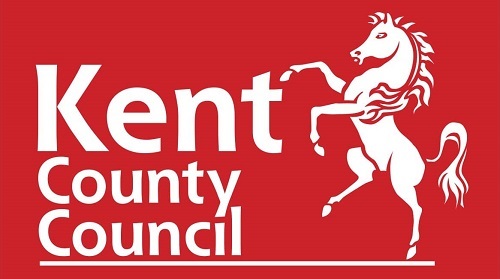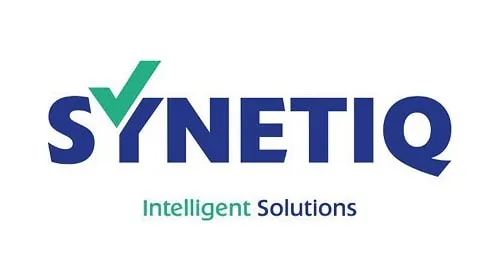Reclamet Limited
View ALL WASTE SERVICES
Reclamet Limited
View ALL WASTE SERVICES



How Can We Detect Different Metals?
We have an excellent tool for analysing the material content of metal in the yard, so we can correctly identify significant quantities of different metal types – particularly in large items. For instance, we recently scrapped some rudders from DFDS ferries at the Port of Dover. Whilst the most prevalent metal for the whole rudder appeared to be stainless steel, a section looked like bronze.
Our Hitachi Vulcan scanner confirmed this.
What metal is used in ferry rudders?
Ferry rudders are typically made from materials that offer a combination of strength, corrosion resistance, and durability to withstand the harsh marine environment. Common materials used for ferry rudders include:
Bronze: Bronze, an alloy of copper and other elements such as tin, aluminium, or zinc, is often used for marine applications due to its excellent corrosion resistance and mechanical properties. It is particularly suitable for components exposed to seawater.
Stainless Steel: Certain grades of stainless steel, such as 316 stainless steels, are widely used in marine applications due to their corrosion resistance and strength. Stainless steel offers good durability and can withstand the corrosive effects of seawater.
Aluminium: Aluminium alloys, such as 5083 or 6061 aluminium, are lightweight and corrosion-resistant, making them suitable for marine applications, including rudders. Aluminium rudders offer a good strength-to-weight ratio and require minimal maintenance.
Nickel-Aluminium Bronze: This alloy offers excellent corrosion resistance, particularly in seawater environments, and is often used for marine components like rudders and propellers.
The specific choice of material for ferry rudders depends on factors such as the vessel’s design requirements, operating conditions, budget constraints, and the desired balance between performance and cost.
Composite materials may also be used in some modern ferry rudders, offering advantages such as reduced weight and improved corrosion resistance.
What is the Hitachi Vulcan scanner?
The Hitachi Vulcan LIBS (Laser-Induced Breakdown Spectroscopy) spectrometer is an analytical instrument used for elemental analysis (in our case, it has been calibrated for metals). LIBS works by focusing a high-energy laser pulse onto the surface of a sample, causing it to ablate and form a plasma. This plasma emits light, which is then analysed to determine the sample’s elemental composition.
The Hitachi Vulcan LIBS spectrometer is very user-friendly and requires basic training. There is software for data analysis and interpretation of results from which you can generate reports.
While we use it to identify metals, it has many other uses. Here are some others:
Material identification and verification: It can quickly identify the elemental composition of materials, helping with quality control and assurance in industries such as manufacturing, recycling, and mining.
Environmental monitoring: The instrument can analyse soil, water, and air samples for pollutants and contaminants, aiding in ecological monitoring and remediation efforts.
Archaeology and cultural heritage: LIBS can be used to analyse artefacts and historical objects, helping to identify materials and understand their composition and provenance.
Pharmaceutical and biomedical analysis: It can be utilised for elemental analysis in pharmaceuticals, medical devices, and biological samples.
Forensic analysis: LIBS can assist in forensic investigations by analysing trace evidence such as gunshot residue or identifying the elemental composition of materials found at crime scenes.

How Can We Detect Different Metals?
We have an excellent tool for analysing the material content of metal in the yard, so we can correctly identify significant quantities of different metal types – particularly in large items.
For instance, we recently scrapped some rudders from DFDS ferries at the Port of Dover. Whilst the most prevalent metal for the whole rudder appeared to be stainless steel, a section looked like bronze.
Our Hitachi Vulcan scanner confirmed this.

What metal is used in ferry rudders?
Ferry rudders are typically made from materials that offer a combination of strength, corrosion resistance, and durability to withstand the harsh marine environment. Common materials used for ferry rudders include:
Bronze: Bronze, an alloy of copper and other elements such as tin, aluminium, or zinc, is often used for marine applications due to its excellent corrosion resistance and mechanical properties. It is particularly suitable for components exposed to seawater.
Stainless Steel: Certain grades of stainless steel, such as 316 stainless steels, are widely used in marine applications due to their corrosion resistance and strength. Stainless steel offers good durability and can withstand the corrosive effects of seawater.
Aluminium: Aluminium alloys, such as 5083 or 6061 aluminium, are lightweight and corrosion-resistant, making them suitable for marine applications, including rudders. Aluminium rudders offer a good strength-to-weight ratio and require minimal maintenance.
Nickel-Aluminium Bronze: This alloy offers excellent corrosion resistance, particularly in seawater environments, and is often used for marine components like rudders and propellers.
The specific choice of material for ferry rudders depends on factors such as the vessel’s design requirements, operating conditions, budget constraints, and the desired balance between performance and cost.
Composite materials may also be used in some modern ferry rudders, offering advantages such as reduced weight and improved corrosion resistance.
What is the Hitachi Vulcan scanner?
The Hitachi Vulcan LIBS (Laser-Induced Breakdown Spectroscopy) spectrometer is an analytical instrument used for elemental analysis (in our case, it has been calibrated for metals). LIBS works by focusing a high-energy laser pulse onto the surface of a sample, causing it to ablate and form a plasma. This plasma emits light, which is then analysed to determine the sample’s elemental composition.
The Hitachi Vulcan LIBS spectrometer is very user-friendly and requires basic training. There is software for data analysis and interpretation of results from which you can generate reports.
While we use it to identify metals, it has many other uses. Here are some others:
Material identification and verification: It can quickly identify the elemental composition of materials, helping with quality control and assurance in industries such as manufacturing, recycling, and mining.
Environmental monitoring: The instrument can analyse soil, water, and air samples for pollutants and contaminants, aiding in ecological monitoring and remediation efforts.
Archaeology and cultural heritage: LIBS can be used to analyse artefacts and historical objects, helping to identify materials and understand their composition and provenance.
Pharmaceutical and biomedical analysis: It can be utilised for elemental analysis in pharmaceuticals, medical devices, and biological samples.
Forensic analysis: LIBS can assist in forensic investigations by analysing trace evidence such as gunshot residue or identifying the elemental composition of materials found at crime scenes.




